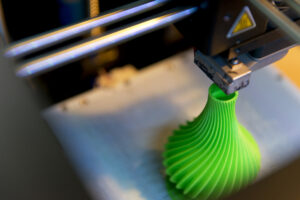FDM and SLA 3D Printing: Which is Right for Your Application?
There are many different formats when it comes to 3D printing. Fused Deposition Modeling (FDM) and Stereolithography (SLA) are the two most popular formats. Which one is best for your project depends on many factors.
ProTek Models & 3D Printing has been providing professional 3D printing services to companies in Texas and throughout the U.S. for over twenty years. Our expert team of 3D print specialists can handle just about any 3D print job. We offer customers both FDM and SLA 3D print options.
The FDM 3D Printing Process
The FDM 3D print process works by melting thermoplastic filaments and extruding it layer by layer through a nozzle onto a build platform. The material solidifies upon cooling. A wide variety of materials can be used, including engineering-grade thermoplastics like PLA, ABS, PETG, etc.
FDM is generally faster than the SLA process due to its continuous extrusion process.
The SLA 3D Printing Process
The SLA 3D print process uses photopolymer liquid resins that are cured (hardened) by a UV laser or other light source. The object is built layer by layer by selectively curing the resin. Resins can be engineered for properties such as color, transparency, flexibility, and strength.
SLA typically provides higher resolution and smoother surface finish than FDM due to the nature of the liquid resin and the precision of the curing process.
Post-Processing
FDM workpieces may require post-processing such as sanding, painting, or vapor smoothing to improve surface finish and appearance.
SLA workpieces typically require rinsing in a solvent to remove excess resin and then post-curing under UV light to fully harden the part. Additional finishing steps may also be needed.
The Advantages of 3D Printing
Additive manufacturing processes like FDM and SLA 3D printing provide many advantages to traditional manufacturing methods such as CNC. Some of these advantages include:
- Faster turnaround times compared to other manufacturing processes.
- On-demand production; without long lead times, parts can be produced as required. This also eliminates the need to maintain large inventories of parts.
- SLA in particular is ideal for fabricating parts with complex geometries and intricate surface features.
- 3D printing is very versatile and can produce parts with a variety of properties such as color, transparency, flexibility, strength, etc. Parts can be resistant to water, temperature extremes, corrosion, UV radiation, and more.
These advantages make 3D printing well-suited for rapid prototyping, small to medium production runs, and the production of customized parts.
FDM and SLA 3D Printing in Houston, TX
Located just off I-45 in Conroe, TX, ProTek serves businesses in Houston and South Texas. We have the experience and capabilities to handle a wide range of 3D print projects, from rapid prototyping and scale model production to urethane castings and replacement auto parts. Our customers include businesses and organizations like Circor Energy, Mitsubishi, Oceaneering, NASA, Raytheon, and the U.S. Air Force.
You can get in touch with ProTek Models & 3D Printing through our website or call us at (832) 968-6636 to get a quote and learn more about how 3D printing can help your business.


